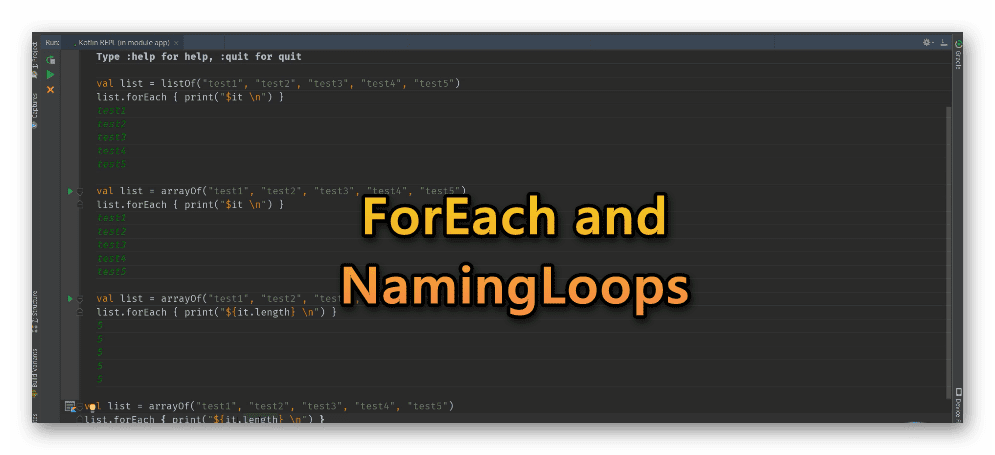
The isEmpty() method returns true if the collection is empty (contains no elements), false otherwise. The contain() method can also be used to check the existence of an element in a list. The in operator can be used to check the existence of an element in a list. Println("Size of the list " + theList.size) Val theList = listOf("one", "two", null, "four", "five") We can use size property to get the total number of elements in a list: Note - here it works like this operator in Java. Lets study them one by one: Using toString() function There are various ways to loop through a Kotlin list. When you run the above Kotlin program, it will generate the following output: Val theMutableList = mutableListOf("one", "two", "three", "four") Val theList = listOf("one", "two", "three", "four") To prevent unwanted modifications, obtain read-only views of mutable lists by casting them to List.


Creating Kotlin Listsįor list creation, use the standard library functions listOf() for read-only lists and mutableListOf() for mutable lists.

Kotlin mutable or immutable lists can have duplicate elements. The elements of list can be accessed using indices. A Kotlin list can be either mutable ( mutableListOf) or read-only ( listOf). Kotlin list is an ordered collection of items.


 0 kommentar(er)
0 kommentar(er)
